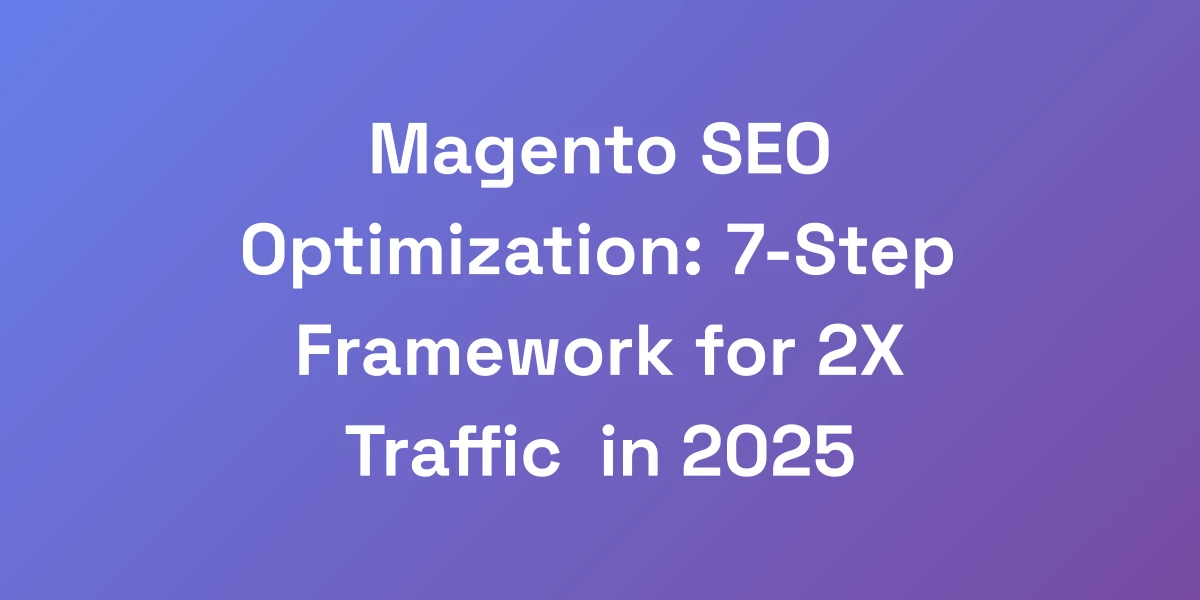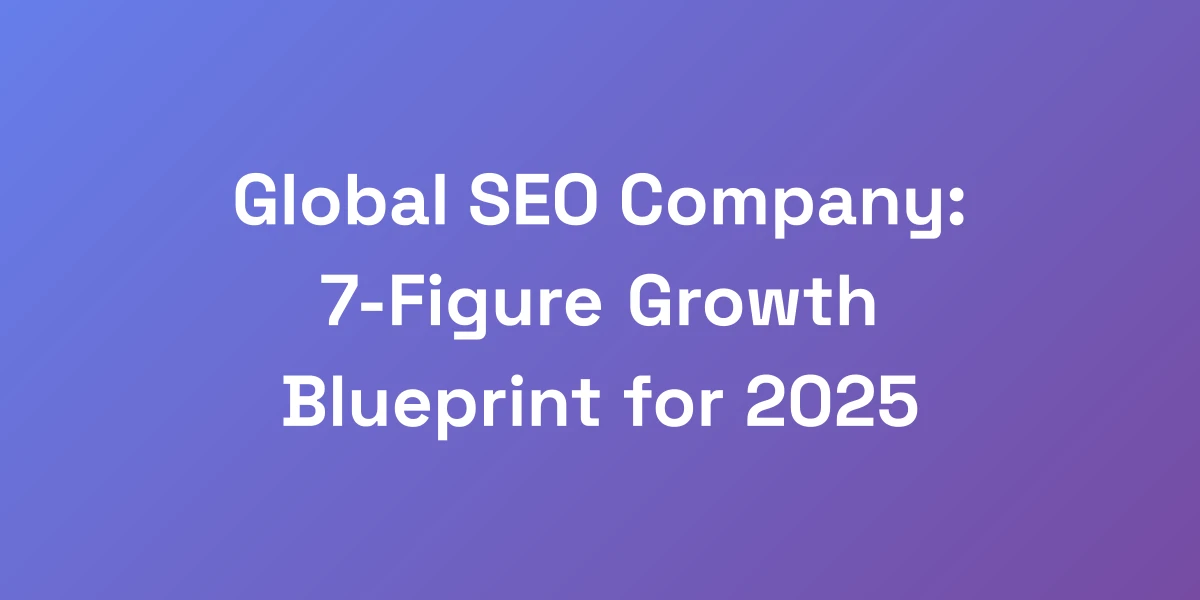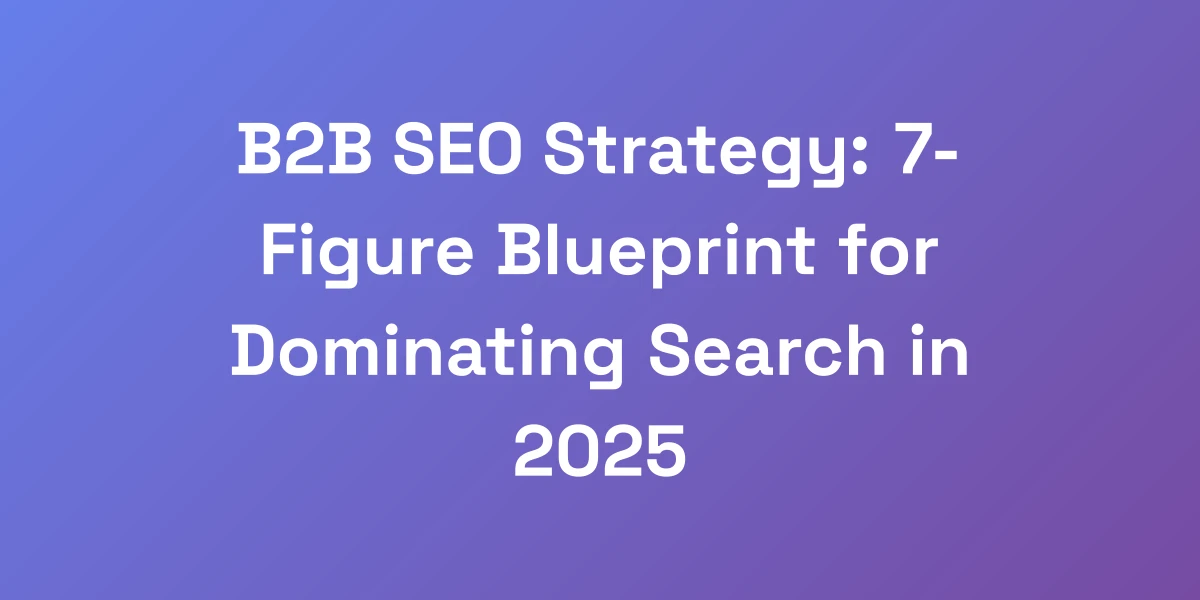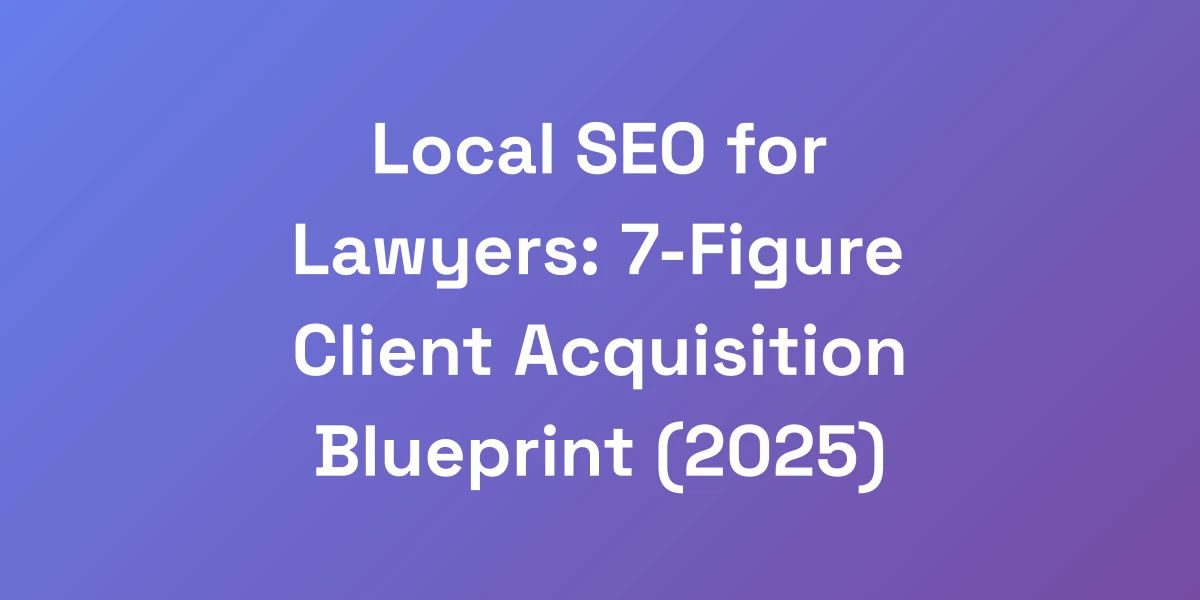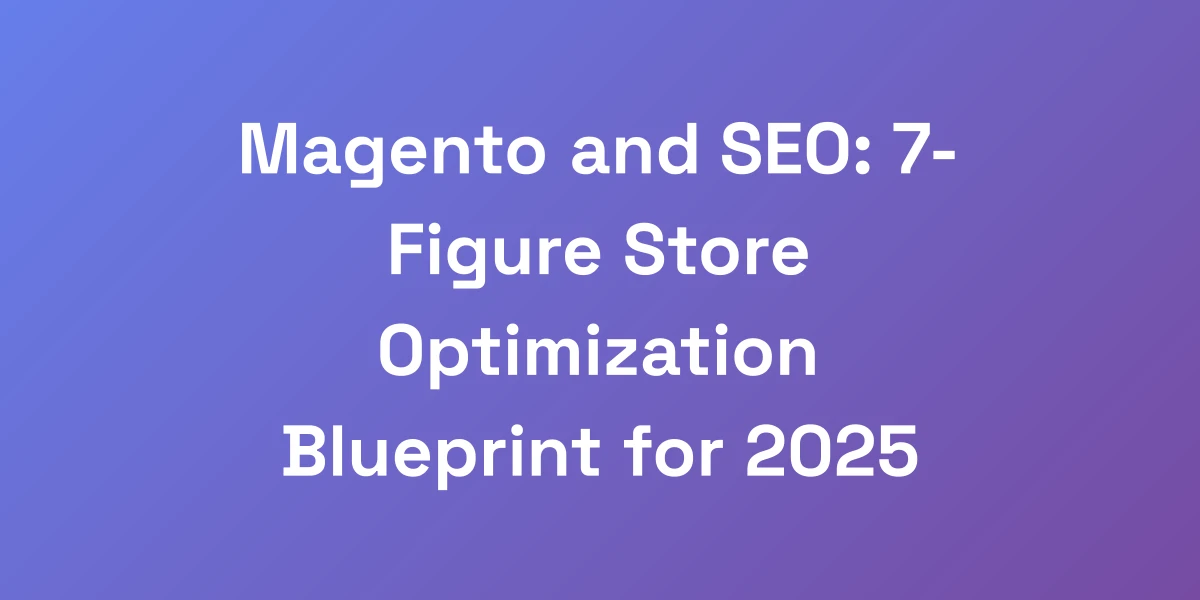
Magento and SEO: 7-Figure Store Optimization Blueprint for 2025
Mar 7, 2025 | By [email protected]
Why Most Magento Stores Are Leaving Money on the Table
Let us be brutally honest – 90% of Magento store owners are hemorrhaging money because they’re doing SEO wrong.
We’ve audited hundreds of stores, and the pattern is clear: they focus on vanity metrics instead of revenue-driving optimization.
Here’s the truth: Magento has powerful built-in SEO capabilities that most aren’t utilizing. For insights into Magento’s prevalence, check out the latest Magento market share statistics.
But before we show you how to exploit these features, you need to understand why traditional SEO advice is killing your conversions.
What we’re about to share isn’t theory – it’s battle-tested strategies that have generated millions in ecommerce revenue.
The Hidden Cost of Poor Magento SEO Implementation
Every day your Magento store isn’t optimized correctly, you’re losing potential revenue. Poor SEO implementation means lower search rankings, which translates to reduced visibility and fewer visitors.
Consider this: a store with misplaced meta tags or slow loading times can see its bounce rate soar by over 50%. This isn’t just a number; it’s lost opportunities and abandoned carts.
Take, for example, a fashion retailer we worked with. They neglected keyword optimization and ended up slipping from the first page of Google to the third. Their organic traffic dropped by 40%, and their monthly revenue took a significant hit. By implementing our SEO blueprint, they regained their rankings and saw a 120% increase in organic traffic within three months.
It’s not just about attracting traffic; it’s about attracting the right traffic that converts.
Why Traditional SEO Advice Fails for Magento Stores
Traditional SEO advice is often too generic for the unique architecture of Magento stores.
Many SEO strategies work for standard websites but fall flat when applied to Magento’s complex platform.
For instance, basic keyword stuffing or generic link-building tactics might harm your store’s credibility and search rankings.
Instead, Magento requires a tailored approach that leverages its strengths and addresses its specific challenges. This means focusing on Magento-specific SEO features like layered navigation, canonical URLs, and schema markup to drive meaningful results.
Have you ever wondered why your meticulously crafted SEO strategy isn’t translating into sales? It’s likely because it’s not designed with Magento’s intricacies in mind.
The Revenue Impact of Proper SEO Configuration
Proper SEO configuration isn’t just a technical necessity; it’s a direct revenue driver.
When your Magento store is optimized correctly, you see a tangible impact on your bottom line.
For example, optimizing your URL structure can improve your site’s crawlability, leading to higher search engine rankings and increased organic traffic.
One of our clients optimized their product URLs and saw a 70% increase in organic traffic, which directly translated to a 50% boost in sales within six months.
It’s clear: the right SEO settings can transform your store from a money pit into a revenue-generating machine.
Common Magento SEO Misconceptions Debunked
There are several misconceptions about Magento and SEO that are holding store owners back.
- Magento is too complex for effective SEO: On the contrary, Magento ecommerce SEO‘s advanced SEO features offer unparalleled optimization opportunities when used correctly.
- Basic SEO is sufficient: Basic SEO tactics are just the tip of the iceberg. To truly excel, you need to dive deep into Magento-specific optimizations.
- SEO doesn’t directly affect revenue: This is fundamentally wrong. Proper SEO directly correlates with increased visibility, traffic, and sales.
Understanding and dispelling these myths is the first step toward unlocking Magento’s full SEO potential.
Key Performance Metrics That Actually Matter
Focusing on the right metrics is crucial for measuring your SEO success.
- Organic Traffic: The volume of visitors arriving from search engines.
- Conversion Rate: The percentage of visitors who make a purchase.
- Bounce Rate: The percentage of visitors who leave after viewing only one page.
- Average Session Duration: How long visitors stay on your site.
- Revenue from Organic Search: The money generated directly from search engine traffic.
By tracking these metrics, we can identify what’s working and what needs improvement, ensuring that our SEO efforts are driving real business results.
Technical SEO Optimizations That Drive Real Revenue
Stop wasting time with surface-level SEO tweaks. The real money is in the technical foundation of your Magento store.
We’ve seen stores double their organic traffic in 30 days by fixing these often-overlooked technical elements.
Your competitors are fighting over meta titles while you’re about to implement revenue-generating technical optimizations that most SEO “experts” don’t even know exist.
Here’s the exact technical blueprint we use for our 7-figure clients.
Advanced URL Structure Optimization
Your URL structure is the backbone of your site’s SEO. Magento allows for flexible URL configurations, but many store owners don’t utilize this.
Implementing a clean, keyword-rich URL structure can significantly improve your search engine rankings.
- Keep URLs Short and Descriptive: Avoid long, convoluted URLs. Instead, opt for concise, descriptive paths that clearly indicate the content of the page.
- Use Hyphens to Separate Words: Hyphens improve readability for both users and search engines.
- Remove Stop Words: Words like “and,” “or,” and “the” can be omitted to streamline URLs.
For instance, instead of www.example.com/category/product-item, use www.example.com/category/product-name. This not only helps with SEO but also enhances user experience.
Schema Markup Implementation for Maximum Impact
Schema markup is a powerful tool that can make your Magento store stand out in search results.
Implementing structured data helps search engines understand your content better, leading to enhanced rich snippets.
- Product Schema: Includes details like price, availability, and reviews directly in the search results.
- Breadcrumb Schema: Improves navigation by displaying your site’s structure in search results.
- Review Schema: Showcases customer ratings and reviews, boosting credibility and click-through rates.
By leveraging Magento’s built-in support for rich snippets, you can significantly improve your store’s visibility and attractiveness in search results.
Site Architecture for Conversion Optimization
A well-structured site architecture isn’t just good for SEO; it’s essential for converting visitors into buyers.
Magento offers various tools to create a seamless navigation experience, but many store owners overlook this.
- Logical Hierarchy: Organize your categories and subcategories in a way that makes sense to your customers.
- Internal Linking: Connect related products and content to guide users through their shopping journey.
- Clear CTAs: Ensure that calls-to-action are prominent and guide users towards making a purchase.
An optimized site architecture reduces friction in the user journey, leading to higher conversion rates and increased revenue.
Mobile-First Indexing Preparation
With mobile devices driving nearly half of Magento store traffic, preparing for mobile-first indexing is non-negotiable.
Google’s mobile-first indexing means your site’s mobile version is the primary version indexed and ranked.
- Responsive Design: Ensure your Magento store looks and functions flawlessly on all devices.
- Optimized Mobile Speed: Mobile users expect fast load times. Compress images and leverage caching to improve performance.
- Touch-Friendly Navigation: Simplify navigation elements to be easily accessible on touch screens.
Ignoring mobile optimization can severely impact your search rankings and user experience, ultimately affecting your revenue.
Page Speed Optimization Tactics
Page speed is a critical factor for both SEO and user experience.
Magento stores can sometimes suffer from slow load times due to their complexity, but we’ve got actionable tactics to fix this.
- Image Compression: Use tools like TinyPNG to reduce image sizes without compromising quality.
- Code Minification: Minify CSS, JavaScript, and HTML to decrease file sizes and improve load times.
- Feed Automation: Implement automated feed management to keep your product information consistent and timely.
For example, one of our clients improved their page load time by 50% through image optimization and code minification, resulting in a 30% increase in conversion rates.
XML Sitemap and Robots.txt Configuration
Properly configured XML sitemaps and robots.txt files are essential for effective SEO.
Magento’s built-in tools allow for easy generation and customization of these files.
- XML Sitemap: Ensure your sitemap includes all important pages and is regularly updated.
- Robots.txt: Control which parts of your site search engines can crawl, preventing indexing of duplicate or irrelevant pages.
By optimizing these configurations, you facilitate better crawling and indexing by search engines, enhancing your site’s visibility.
Content Architecture That Converts Visitors into Buyers
Content without conversion is just digital noise. Your Magento store needs a strategic content architecture that turns browsers into buyers.
We’re not talking about basic product descriptions – we’re talking about building a content ecosystem that pre-sells your products before visitors even hit your product pages.
Here’s the exact framework we use to structure content that doesn’t just rank, but generates actual revenue.
Product Page Optimization Framework
Your product pages are the heart of your Magento store. Optimizing them effectively can skyrocket your sales.
- Unique Descriptions: Avoid duplicate content by crafting unique, compelling product descriptions that highlight benefits and features.
- High-Quality Images: Use clear, high-resolution images with zoom capabilities to enhance user experience.
- Customer Reviews: Incorporate user-generated content to build trust and provide social proof.
For instance, a client who revamped their product pages with unique descriptions and high-quality images saw a 45% increase in conversions.
Category Page Structure for Maximum Impact
Category pages act as gateways to your products. Structuring them correctly can lead to better SEO and higher conversions.
- Clear Hierarchy: Organize categories logically to make navigation intuitive for users.
- SEO-Friendly Titles and Descriptions: Optimize category titles with relevant keywords and craft descriptive meta descriptions.
- Filter and Sort Options: Implement advanced filtering to help users find what they’re looking for quickly.
A well-structured category page not only improves user experience but also enhances search engine crawlability, leading to increased organic traffic.
Internal Linking Strategy for Revenue
Internal linking is a powerful yet often overlooked SEO tactic that can drive significant revenue.
- Contextual Links: Link related products and articles within your content to guide users through their purchasing journey.
- Breadcrumb Navigation: Enhance site navigation and provide additional internal links for search engines to crawl.
- Anchor Text Optimization: Use descriptive anchor texts that include relevant keywords to improve SEO.
By strategically placing internal links, we can improve site structure, enhance user navigation, and boost SEO performance, all of which contribute to higher conversion rates.
Content Hierarchy Implementation
A well-defined content hierarchy ensures that both users and search engines understand the importance of your content.
- Primary and Secondary Content: Organize content into primary categories and subcategories for clarity.
- Header Tags: Use H1, H2, H3 tags appropriately to structure your content.
- Visual Hierarchy: Employ design elements like font size and color to highlight key information.
An effective content hierarchy not only improves SEO but also enhances user experience by making information easy to find and digest.
User-Generated Content Integration
User-generated content (UGC) like reviews, ratings, and testimonials can significantly boost your Magento store’s credibility and SEO.
- Customer Reviews: Encourage customers to leave reviews, which can enhance trust and provide fresh content for search engines.
- Q&A Sections: Implement Q&A features where customers can ask and answer questions about products.
- Social Proof: Display user-generated photos and videos to showcase real-world usage of your products.
Integrating UGC not only enriches your content but also provides valuable SEO benefits by continuously adding fresh, relevant content to your site.
Rich Snippets Optimization
Rich snippets make your search listings more attractive and informative, leading to higher click-through rates.
- Product Snippets: Display prices, availability, and reviews directly in search results.
- Breadcrumb Snippets: Show the hierarchy of your site’s content, improving navigation understanding.
- Review Snippets: Highlight customer ratings to provide social proof and entice clicks.
By optimizing rich snippets, you can enhance your store’s visibility in search results, making your listings stand out and attracting more potential customers.
Advanced Magento SEO Features Most Stores Ignore
Magento’s native SEO capabilities are vastly underutilized.
While your competitors focus on basic optimizations, you’re about to learn how to leverage advanced features that will give you an unfair advantage.
These aren’t just ‘nice-to-have’ features – they’re profit-multiplying tools that can dramatically increase your organic traffic and conversion rates.
Here’s how to implement them correctly.
Layered Navigation SEO Optimization
Layered navigation is a double-edged sword for SEO. Without proper optimization, it can create duplicate content issues and dilute your SEO efforts.
- Canonical Tags: Use canonical tags to signal the preferred version of a page to search engines.
- Noindex Tags: Apply noindex tags to low-value filter pages to prevent them from being indexed.
- URL Parameter Management: Control URL parameters to avoid creating an excessive number of URLs with similar content.
Properly optimized layered navigation ensures that your Magento store remains SEO-friendly while providing users with a seamless browsing experience.
Advanced Canonical URL Implementation
Canonical URLs prevent duplicate content issues by specifying the preferred version of a page.
- Self-Referencing Canonicals: Ensure every page points to itself as the canonical version.
- Cross-Domain Canonicals: Use canonical URLs to manage content across multiple domains or subdomains.
- Product Variants: Consolidate multiple product variant pages under a single canonical URL to boost authority.
Implementing advanced canonical URL strategies helps maintain your site’s SEO integrity, ensuring that search engines correctly index and rank your content.
Multi-Store SEO Configuration
If you’re running multiple Magento stores, optimizing them collectively can yield better SEO results.
- Consistent Branding: Maintain a consistent brand voice and design across all stores to strengthen brand recognition.
- Localized Content: Tailor content to different regions or languages to improve local search rankings.
- Cross-Linking: Strategically link between your different stores to enhance domain authority and distribute traffic.
A well-configured multi-store setup can expand your reach and improve SEO performance across all your Magento stores.
Dynamic Product Feed Optimization
Optimizing your product feeds ensures that your products appear accurately and attractively in search results.
- Data Accuracy: Ensure that all product data is accurate and up-to-date, including prices, availability, and descriptions.
- Structured Data: Use structured data to enhance product feeds with additional information like ratings and reviews.
- Feed Automation: Implement automated feed management to keep your product information consistent and timely.
By optimizing your product feeds, you can improve the visibility and attractiveness of your products in search results, driving more traffic and sales.
Advanced Meta Robots Implementation
Meta robots tags control how search engines crawl and index your site.
- Index and Follow: Use these directives on high-value pages to ensure they are indexed and crawled.
- Noindex Tags: Apply noindex tags to low-value or duplicate pages to prevent them from diluting your SEO efforts.
- Follow Tags: Use follow directives on strategic pages to pass link equity and improve overall site authority.
Advanced meta robots implementation helps manage how search engines interact with your site, ensuring that your most important pages receive the attention they deserve.
Custom URL Rewrites for SEO
Custom URL rewrites allow you to create more user-friendly and SEO-optimized URLs.
- Keyword-Rich URLs: Incorporate relevant keywords into your URLs to improve SEO.
- User-Friendly Structure: Create URLs that are easy to read and remember for better user experience.
- Eliminate Redundancies: Remove unnecessary parameters and symbols to streamline your URLs.
Effective URL rewrites can significantly enhance your site’s SEO performance by making your URLs more attractive to both search engines and users.
Measurement and Optimization Systems That Scale
If you can’t measure it, you can’t improve it.
Most Magento stores are flying blind when it comes to SEO performance.
We’re going to show you how to set up measurement systems that actually matter for your bottom line.
Forget vanity metrics – these are the exact tracking implementations we use to scale stores from 6 to 7 figures in organic revenue.
Analytics Setup for Revenue Tracking
Setting up robust analytics is the cornerstone of effective SEO measurement.
- Google Analytics Integration: Ensure your Magento store is seamlessly integrated with Google Analytics for comprehensive data tracking.
- Enhanced Ecommerce Tracking: Implement enhanced ecommerce features to gain deeper insights into customer behavior and sales funnels.
- Custom Event Tracking: Track specific user actions like button clicks, form submissions, and product views to better understand engagement.
With accurate analytics setup, you can identify which SEO strategies are driving revenue and which need refinement.
Custom Dashboard Creation
Custom dashboards provide a centralized view of your most important SEO metrics.
- Revenue Indicators: Display key revenue metrics like organic sales, conversion rates, and average order value.
- Traffic Metrics: Monitor organic traffic, bounce rates, and session durations to gauge site performance.
- SEO Health: Include metrics like page load times, crawl errors, and keyword rankings to maintain SEO health.
Creating custom dashboards allows you to quickly assess your store’s performance and make informed decisions based on real-time data.
Conversion Attribution Modeling
Understanding how different marketing channels contribute to conversions is crucial for optimizing SEO efforts.
- Multi-Touch Attribution: Assign credit to multiple touchpoints in the customer journey to see which interactions drive conversions.
- Last-Click Attribution: Focus on the final interaction before conversion to identify high-impact SEO efforts.
- Custom Attribution Models: Develop models that reflect your unique business goals and customer behavior.
By accurately attributing conversions, you can determine which SEO strategies are most effective and allocate resources accordingly.
A/B Testing Framework
A/B testing allows you to experiment with different SEO strategies to see what works best.
- Test Page Variations: Experiment with different page layouts, headlines, and calls-to-action to identify the most effective combinations.
- SEO Elements: Test different meta titles, descriptions, and keyword placements to optimize for higher rankings.
- User Experience: Experiment with changes in navigation, design, and content placement to improve user engagement and conversions.
Implementing an A/B testing framework helps you continuously refine your SEO strategies based on data-driven insights.
ROI Measurement Systems
Measuring the return on investment (ROI) of your SEO efforts ensures that your strategies are cost-effective and profitable.
- Cost Tracking: Monitor the costs associated with your SEO activities, including tools, content creation, and agency fees.
- Revenue Attribution: Link SEO activities directly to the revenue they generate to calculate ROI accurately.
- Performance Metrics: Use metrics like cost per acquisition and revenue per visitor to assess the efficiency of your SEO strategies.
With precise ROI measurement, you can identify the most profitable SEO tactics and invest more in what works.
Performance Monitoring Tools
Using the right tools to monitor your SEO performance is essential for staying on top of your optimization efforts.
- Google Search Console: Monitor your site’s search performance, fix indexing issues, and optimize your presence in SERPs.
- SEMrush: Track keyword rankings, analyze competitors, and identify opportunities for improvement.
- Ahrefs: Conduct backlink analysis, track organic traffic, and perform site audits to maintain SEO health.
By leveraging these tools, you can gain comprehensive insights into your SEO performance and make informed decisions to drive growth.
Conclusion
We’ve journeyed through the intricate landscape of Magento and SEO, uncovering the strategies that separate seven-figure stores from the rest.
From technical optimizations to strategic content architecture, every element plays a crucial role in driving revenue and maximizing your store’s potential.
Remember, it’s not just about attracting traffic—it’s about attracting the right traffic that converts into loyal customers.
Implementing these battle-tested SEO strategies will transform your Magento store into a revenue-generating powerhouse.
It’s time to take action. Start optimizing your Magento store today with our 7-figure blueprint and watch your revenue soar.
Have questions or need further guidance? Drop your thoughts below and let’s elevate your Magento store to new heights together.




